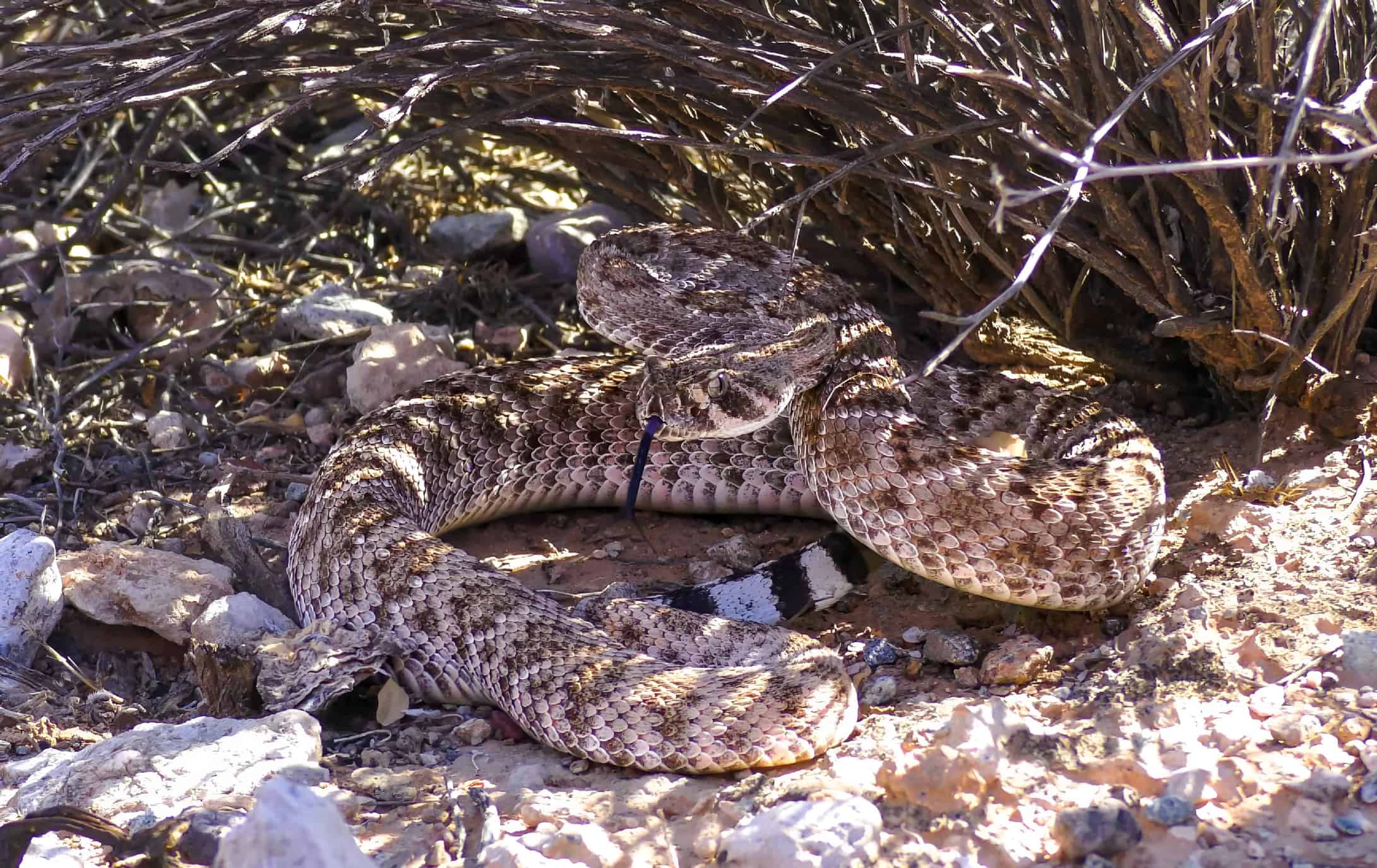Continue reading for our analysis...

In the video below, we join Bryan, the owner of a rattlesnake removal business, as he is on his way to Cave Creek, Arizona. He explained that a client had contacted him because he had spotted three rattlesnakes under a rock in his front yard.
That is essentially a rattlesnake den and it needed to be visited and removed.
Removing Rattlesnakes From a Front Yard
This removal took place in early November and many people are surprised to see rattlesnakes at this time of year because they think the snakes should be hibernating.
In fact, these snakes are doing just that. Snakes actually enter a state called brumation when they are sleepy and sluggish.
They like to find somewhere sheltered to do this and they are certainly less active but they are not completely hidden away. It is the ectothermic (cold-blooded) animal’s equivalent of hibernation.
Two western diamondback rattlesnakes are safely retrieved with pinchers and placed in a secure container. One is a bit more awake than the other. Bryan tries to flush out any remaining snakes with a hose but it seems that there are no more under the rocks.

When snakes brumate they become sluggish and sleepy and find places to hide
©Alexander Wong/Shutterstock.com
Why Had the Snakes Chosen This Front Yard?
Western diamondback rattlesnakes are found across Central and North America. They can grow to seven feet in length, are venomous, and prey on small mammals. These snakes can and do bite humans but prefer to just stay away from us.
As he is taking these snakes to the release site, Bryan explains that Arizona has a mild winter climate with daytime temperatures over 60 degrees.
Many people own a second home in the area and only use it for a few months of the year. This means that the yard areas are ‘available’ and attractive for wildlife for the rest of the time because they will not get disturbed.

Western diamondback rattlesnakes have retractable fangs.
©Audrey Snider-Bell/Shutterstock.com
As far as the rattlesnakes are concerned, this is their habitat, and they are more likely to move into these homes than those occupied all year around.
This rattlesnake den was right next to a front door and that would be very unlikely to happen in fully occupied houses as the snakes would be scared away by the constant movement of cars and humans.
Bryan follows a steep trail and finds a suitable boulder pile with a pack rat nest where he releases the snakes!
Discover the "Monster" Snake 5X Bigger than an Anaconda
Every day A-Z Animals sends out some of the most incredible facts in the world from our free newsletter. Want to discover the 10 most beautiful snakes in the world, a "snake island" where you're never more than 3 feet from danger, or a "monster" snake 5X larger than an anaconda? Then sign up right now and you'll start receiving our daily newsletter absolutely free.
Thank you for reading! Have some feedback for us? Contact the AZ Animals editorial team.






